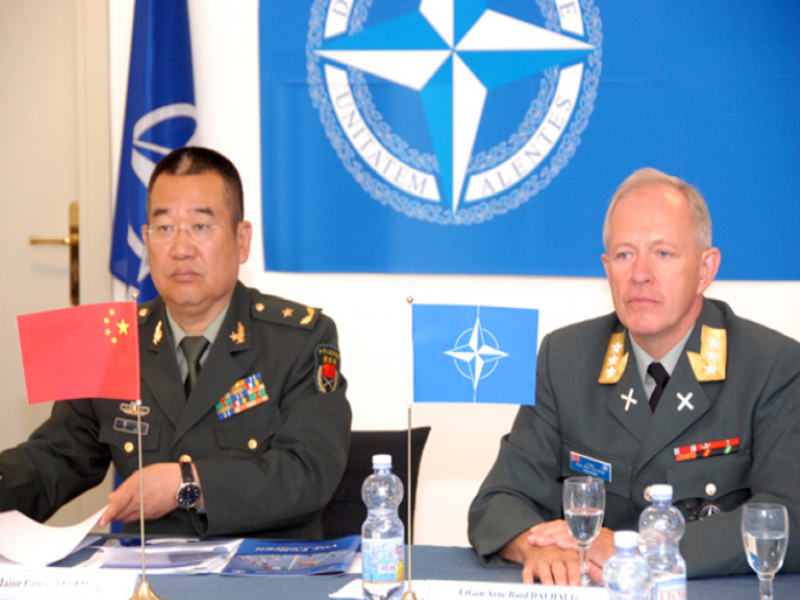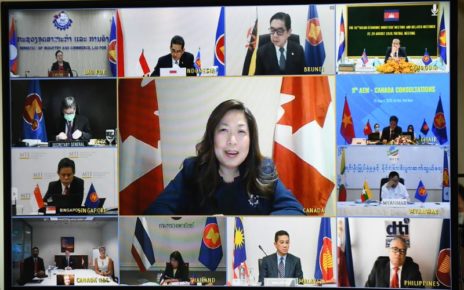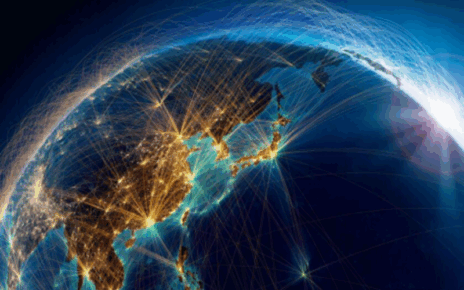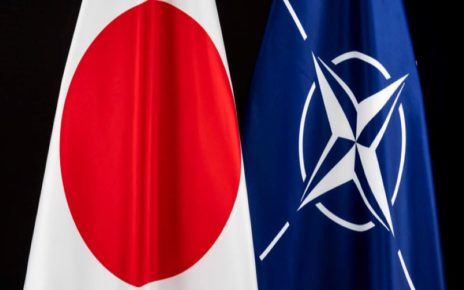NATO is a unique organization, let alone an Alliance. For the past 72 years, it has been a central pillar of transatlantic defence and deterrence, in addition to being a vehicle that has promoted unity and cohesion among its members. However, NATO is at an inflection point related to its relevance in an evolving and deepening multipolar global order where strategic competition between the major powers has intensified.
The growing great power competition between the US and China in the Indo-Pacific has become one such point of discussion for NATO members. Recognizing the need to design a China and Indo-Pacific strategy due to Chinese stated ambitions and assertive behaviour showcasing its ability to systemically challenge the rules-based order and areas relevant to its collective security and defence, some ally members—France. Germany and the United Kingdom—have developed their foreign policies to encompass the emerging challenge from China.
Although these actions have left NATO’s small and middle powers and its bureaucratic system apprehensive in conceptualizing a NATO-driven “China strategy,” there has been inadequate attention directed towards China’s response and observation of a growing extra-regional alliance of transatlantic liberal-democratic states in its backyard.
Sino-NATO Relations
Sino-NATO relations are unique due to the Alliance’s predominant role during the Cold War and the vast geographical distance between Europe and China. Moreover, its historical separation between strategic oversight and economic opportunity has resulted in the heightening and cooling of relations. However, severe Sino-NATO tensions began to take shape in the 1980s, a decade after China began to “open” itself to the globalized world, when NATO imposed an arms embargo against China in 1989 due to the Tiananmen Square massacre. Tensions between the two heightened in 1998-99 when China supported the Socialist Federal Republic of Yugoslavia during the Kosovo War and opposed NATO’s military intervention. This opposition intensified when NATO bombed the Chinese embassy in Belgrade, killing three Chinese journalists and injuring many others.
After the 9/11 attacks and the invasion of Afghanistan in 2002, Sino-NATO relations began to shift. With China sharing a border with Afghanistan, it was logical for NATO leaders to arrange meetings with China, eventually resulting in a normalization of relations. With this process, Sino-NATO relations became more progressive, leading NATO and China to establish joint operations in combating terrorism, patrolling the Mediterranean, African, and Arabian coasts for maritime piracy, and supporting the non-proliferation of nuclear weapons.
In recent years, however, Sino-NATO relations have declined. In the two decades since the 9/11 attacks, China has become the regional power in East Asia, has emerged as the second great power of the period—alongside the United States—and has steadily invested in Europe through its Belt and Road Initiative. Coupled with the rising tide of populist and nationalist leaders in Europe and the previous American presidency of Donald Trump undervaluing its relationship with allies, NATO is becoming more vulnerable to non-traditional and extra-regional threats. This vulnerability was displayed when NATO’s Secretary-General Jens Stoltenberg asserted that China “does not share our values, it undermines human rights, it bullies other countries and is increasingly engaging in a systemic competition with us.” This perspective led NATO to specifically identify China as a systemic rival in its NATO 2030 report.
China’s Perspective on NATO’s Indo-Pacific Engagement
With the growing great power competition between the US and China in the Indo-Pacific, NATO leaders need to comprehend how China will perceive an extra-regional alliance in its region and peripheries. The recent addition of France and the UK’s recent tilt towards the Indo-Pacific—two major NATO powers—contributes to the growing competition in the region. It is necessary to realize that China has longed to restore its golden age of hegemonic rule over the region and cement its global status as a great power. However, due to the growing great power competition in the Indo-Pacific, hegemony is becoming more challenging to achieve.
Hegemony constitutes four secondary dimensions, namely self- and regional perceptions, provision, and projection. China has fulfilled three of the four dimensions, failing only to gain regional perception of its hegemonic rule. Due to the hub-and-spoke alliances between the US and its allies in the Indo-Pacific—namely Japan, South Korea, the Philippines—and the growing fear of direct Chinese dominance, the region’s small, middle and major powers have stopped short of outright recognizing China’s regional hegemony. The reasoning behind this decision is due to the regional hierarchical structure of states economically favouring China while favouring US defensive security.
Beyond a doubt, the region is undergoing a competitive shift in how power politics cultivates and delivers a state’s response and acceptance to political, economic, and security interests. As such, the US and NATO share mutual concerns that China, both as the regional hegemon and a global great power, will export its form of government, economic ideology, and normative stances on international laws and rules to neighbouring states. These enhanced partnerships may help China establish a fortified bloc that can displace the existing international order, thereby making it unfit and unsafe for liberal democracies to flourish and operate.
This observation is active in Chinese political and foreign policy circles that perceive the US’s Indo-Pacific grand strategy within the context of containment. This view of the US Indo-Pacific Strategy wrongfully dismisses the nuance between the Cold War and the current state of great power competition in the region. While the US containment strategy during the Cold War feared the expansion of ideological communism, thereby undermining US economic hegemony in the post-war order, the containment strategy of this period is strictly aimed at balancing China’s great power rise and limiting its hegemonic projection.
With the geographical and logistical realities of NATO being considerably distant and the US being detached from any significant transatlantic ally in the region, it is understandable to recognize why there is an alarmist outlook among Chinese autocratic leaders towards any extra-regional actors becoming more integrated into Indo-Pacific affairs. Rather than perceiving an Indo-Pacific region crowded by economic partners, China regards any engagement from NATO, and its major powers, as a formidable influx of extra-regional challengers and American supporters whose main objective is to counterbalance its claims of hegemony in the region and make its ambitions a rising strategic conundrum with legitimate strategic consequences if it is achieved by force. Lastly, history has taught China to observe extra-regional powers as staunch rivals to its hegemonic prosperity—a lesson President Xi Jinping is well aware of and will not ignore.
With NATO members sharing like-minded values, norms, and interests in upholding the status-quo of the rules-based international order, namely the freedom of navigation and the liberal economic rules-based structure, it will be difficult for the major powers in the Alliance to dictate their independence from the US Indo-Pacific grand strategy. For instance, any regional engagement from NATO will be seen by China as an extension of the US containment strategy as any NATO action would most likely encompass extensive American resources, troops, and naval flotillas.
These outcomes could result in heightening Sino-NATO tensions to a level not seen before. More importantly, however, these strategic decisions would pressure China to strategize similar extra-regional policies to hamper and split the Alliance’s cohesion and ability to respond in the Indo-Pacific and at home by exploiting intra-alliance political differences and economic disparities, thereby endangering NATO’s collective interests and security.
Possible Strategic Reactions from China
Increased NATO presence in the Indo-Pacific may provoke China to target the strategic resilience of NATO members; increase Sino-Russian collaboration and cooperation; and perform more comprehensive unilateral engagements in NATO’s peripheries. These strategies do not intend to directly confront NATO through armed conflict but rather focus its resources and strategic tools away from the Indo-Pacific.
China has been steadily investing in European infrastructure in recent years—from 5G to civilian electrical grids and port development. Currently, China has several State-Owned Enterprises (SOEs) that own 13 European ports. These countries—France, Netherlands, Spain, Italy, and Greece—are strategically situated on waterways and coastlines that access the Mediterranean Sea and the Atlantic Ocean. To deter growing NATO engagement in the Indo-Pacific, China could restrict and control the flow of public goods and port access from these countries, thereby decreasing the resilience of NATO to respond to a threat—either a natural disaster or armed conflict.
China could also challenge NATO by advancing its strategic relationship with Russia. After all, the principal threat for transatlantic security and defence arrives from its eastern flank, where Russia has maintained a strong presence through energy initiatives and a more assertive foreign policy on its neighbours. By offering more substantial assistance, China can embolden Russia to further cyber-attacks and disinformation campaigns on NATO members’ democratic and rules-based institutions.
Although both states are suspicious of one another, China and Russia signed a treaty of friendship in 2001. China could tilt its strategic outlook to improve the security clause enshrined in Article 9 of the treaty to define “threats of aggression” with specific issue areas Russia holds near and dear to its national security. For instance, China could support Russian fears of any future enlargement of NATO, and more importantly, support its perspective of such actions constituting a “threat of aggression” by the West. As a result, China may provide Russia with cyber-espionage technology and data information that positions Russian leadership in advantageous situations. Lastly, to isolate NATO’s eastern flank, China would spark tensions in the Indo-Pacific, forcing American political and military attention towards its great power rival and leaving its European allies without their principal ally.
Observing NATO’s indifference to China’s “historical rights” in the South China Sea in support of the “freedom of navigation,” Chinese leadership could direct naval, coast guard, and commercial ships to cross into NATO’s geographical peripheries. Such actions could range from a more substantial Chinese presence in the Mediterranean, Norwegian and Baltic Seas, and the Arctic Ocean. In 2013, China gained observer status at the Arctic Council and declared itself a “near-Arctic state” in 2018 to promote its “Polar Silk Road.” What is more, China has enormous investments in Greenland, Sweden, Iceland, Norway, and Finland that range from natural gas pipelines, deep-water ports, and scientific research centers. These investments and “near-Arctic” status would hamper any calls from NATO to exclude China’s growing regional geopolitical footprint, along with deterring a “Sino Atlantic Strategy” that permanently coordinates and stations Chinese aircraft, naval and commercial ships into the waterways and airspace of the transatlantic.
Conclusion
These scenarios provide crucial insight into how significant China can defend its regional claims and deter extra-regional actors from interfering in the Indo-Pacific. Although these strategic responses from China may not merit meaningful threats in the traditional sense, the scope and scale of force China can pursue are more sweeping than anything NATO or its members could produce collectively or unilaterally—aside from traditional hard power and armed conflict. It is for this very reason that NATO and its members must be cautious in arranging an engagement strategy for China and the Indo-Pacific.
There is no doubt that China has arrived on Europe’s doorstep, and yes, NATO allies must face this challenge together. However, NATO should not encroach on China’s doorstep to simply please the US to ensure their continued enrollment as the alliance’s principal defender and enforcer of the region’s collective security and defence. Instead, NATO needs to refine its geopolitical security plan towards China by strengthening its ability and resiliency in defending and deterring the transatlantic region from coming under China’s de jure authority.
Photo: Chinese and NATO Commanders at the NATO Defence College. by Warsaw Institute Think Tank. Public Domain.
Disclaimer: Any views or opinions expressed in articles are solely those of the authors and do not necessarily represent the views of the NATO Association of Canada.




